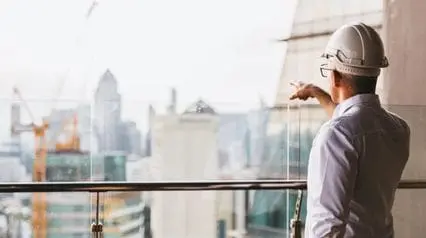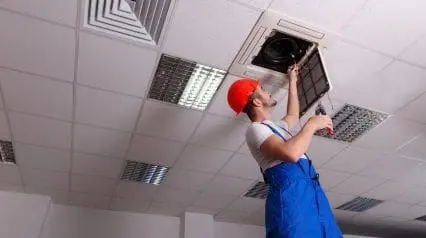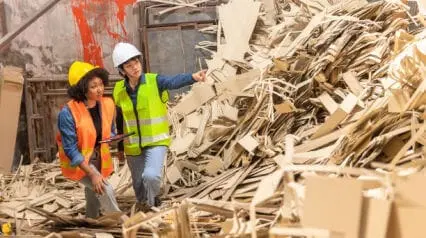What is LEED Certification?
LEED or the Leadership in Energy and Environmental Design certificate is a rating system that assesses a building’s environmental performance to create eco-friendly structures. The US Green Building Council (USGBC) awards this to new and old developments that meet a set of criteria for sustainable design.
What Makes a Building Sustainable?
The main goal of sustainable design is to improve the environmental performance of buildings by ensuring the health and safety of their occupants and reducing its negative impacts on the environment today and in the years to come.
This perfectly aligns with the United Nations’ definition of sustainability, which is “meeting the needs of the present without compromising the ability of future generations to meet their own needs.”
With those principles in mind, here are the criteria that the USGBC set and continuously reviews in developing or revamping structures:
- Increasing energy efficiency – Sustainable buildings must be equipped with appliances, lighting, and HVAC systems that do not consume too much electricity. The incorporation of renewables such as solar panels is also commended.
- Ensuring water conservation – Aside from upgrading to efficient water fixtures like low-flow faucets, flusher, and shower heads for the kitchen, toilet, and bath, installing leak detectors, cooling towers, and rainwater harvesting systems ensure water use efficiency.
- Raising indoor environment quality – This does not just mean minimizing or eliminating pollutants and maintaining proper ventilation inside a building. It also involves proper lighting, thermal conditions, and ergonomics for the people living or working within the structure.
- Using eco-friendly materials – The use of recycled or renewable construction materials, such as stone, bamboo, reclaimed wood, and pre-cast concrete is a must for sustainable buildings.
Although these cannot be precisely measured immediately as the criteria enumerated above, the USGBC also considers the following as priorities when awarding certifications for sustainable design:
- Enhanced individual human health
- Protection of biodiversity and ecosystem
- Better quality of life for the community
Benefits
The construction sector is said to account for a third of the total energy demand in 2021. It is also a huge contributor to carbon emissions in the same year. Fostering a culture of environmental responsibility within organizations across industries is a must today. But aside from minimizing one’s environmental impact or getting LEED certified, going green has great advantages for companies.
- Improves performance – Creating a safe and healthy space has a positive impact on the people within it. An environmentally sound workplace improves the performance of employees, ensuring continued and efficient operations.
- Lowers operating costs – Although some environmentally friendly materials are slightly pricier during construction, operating costs, including monthly utility bills and maintenance fees, will be significantly reduced in the long run.
- Increases property value – Getting the nod from USGBC ups property values and rental rates of buildings. Green buildings attract the public because of what they offer—energy and water-efficient spaces that are safe to stay in.
Steps to Prepare for LEED Certification
Getting LEED-certified is not just a nice perk or accessory. The US General Service Administration (GSA) uses the USGBC system to evaluate and measure sustainable design in building projects, especially for federal or state structures.
Whether you were assigned a government project or just want to uphold sustainability in your construction undertaking, here are some tips for preparing for accreditation.
- Submitting your application – Registering the project with the USGBC is the first step. Aside from submitting the complete documentation of the planned construction with specific sustainability features, prepare the fees for the accreditation process to start.
- Meeting minimum requirements – Three program requirements must be submitted: permanent location, boundaries evaluation, and project size. There are numerous factors to be considered, so it would be best to check the LEED website for minimum requirements details.
- Providing other documentation – This is a detailed report of the sustainability of the plan in terms of energy consumption, water efficiency, indoor environmental quality, and materials used.
- Building your team – Setting roles to meet goals is incredibly important in any organization. It’s no different when applying for LEED certification. This is a good way to ensure that everything is up to par when inspections happen.
USGBC’s provisions vary depending on the construction plan. Do check the LEED certification guide for specifics.
FAQs about LEED Certification
The points to be earned will depend on the level of certification your company is aiming for. There are four to choose from.
- Platinum (80+ points)
- Gold (60-79)
- Silver (50-59)
- Certified (40-49)
It is best to review your building’s level of sustainability based on the different criteria before applying so you can choose which level suits your plan best.
USGBC does not certify construction materials. However, they partner with different manufacturers so that the latter can produce more sustainable materials. This also helps their applicants choose better materials for their construction.
Yes. Historic buildings can enhance sustainability by incorporating modern technology while preserving their aesthetics and cultural value. Century-old libraries, schools, and homes have been LEED-certified, successfully adapting to modern times without losing their old-world charm.
No. USGBC also offers certification to professionals (engineers, architects, builders) who want to help build green structures and uphold sustainability best practices in the construction sector. People vying to be a LEED green associate must pass an examination before getting the credentials. Learn more about this on their website.




